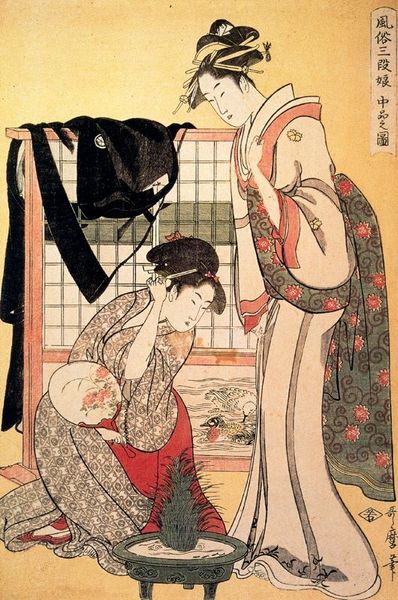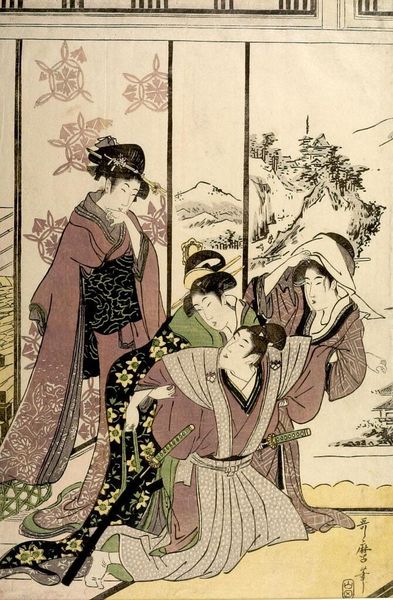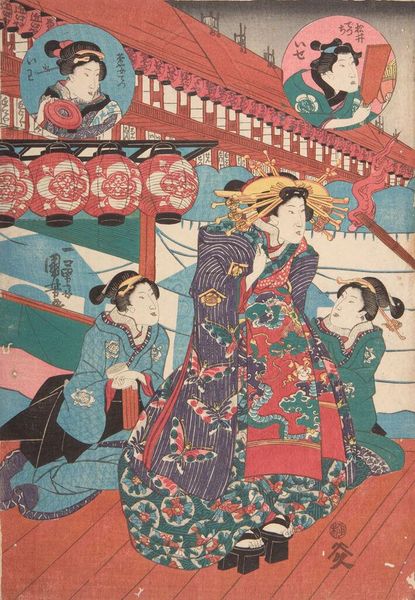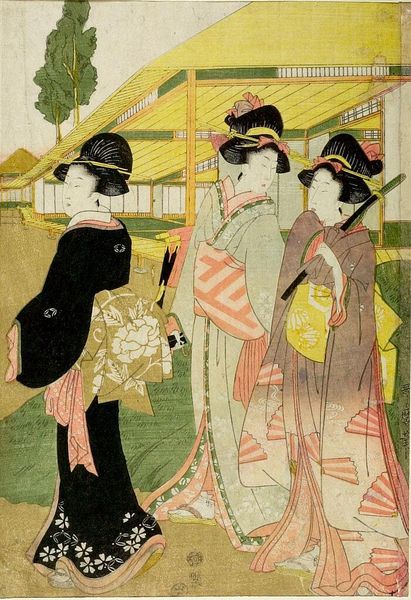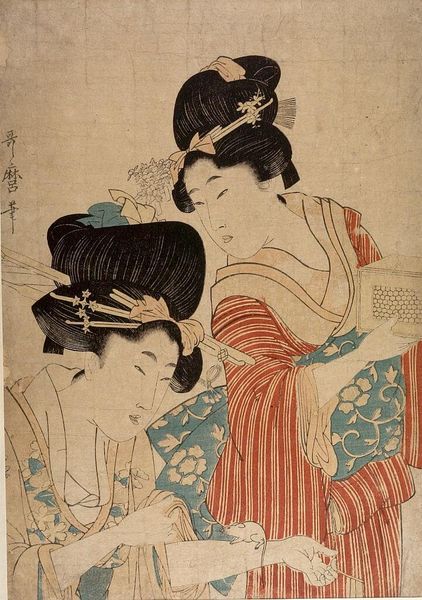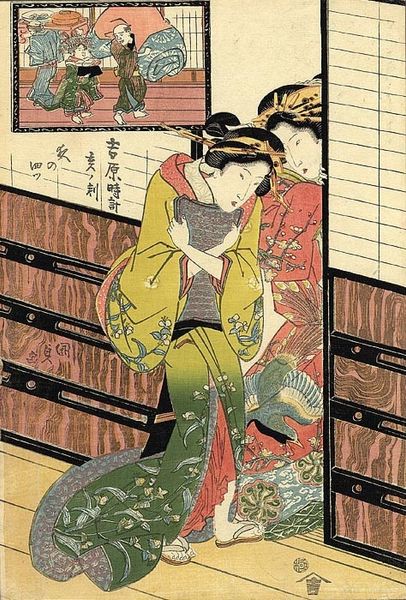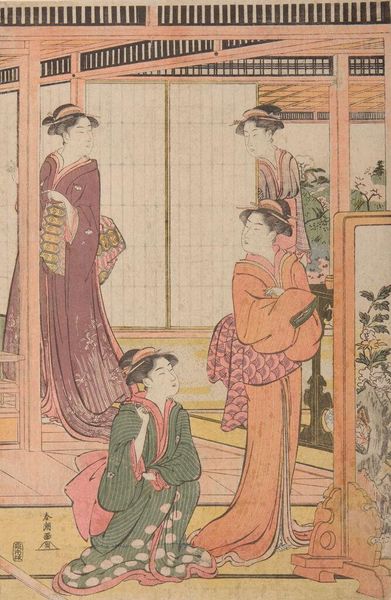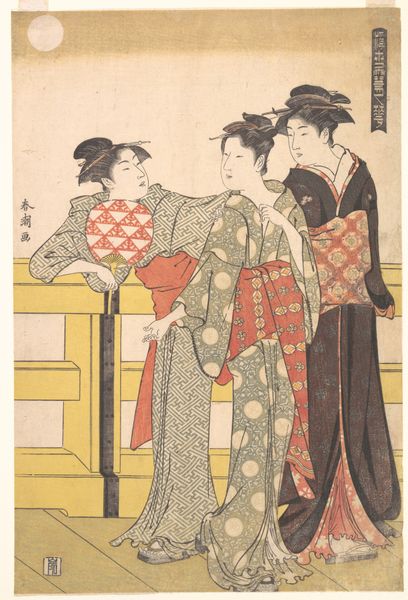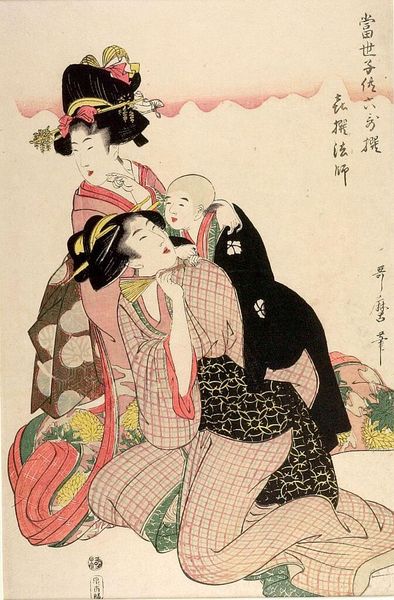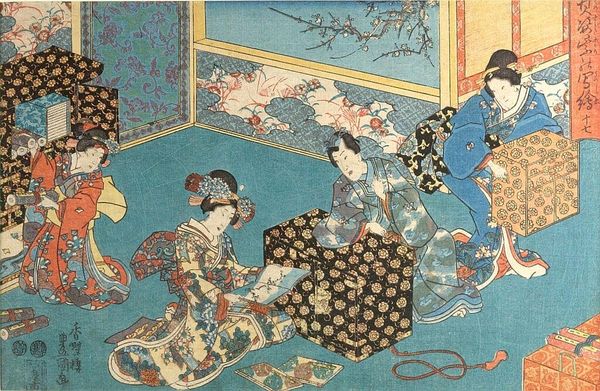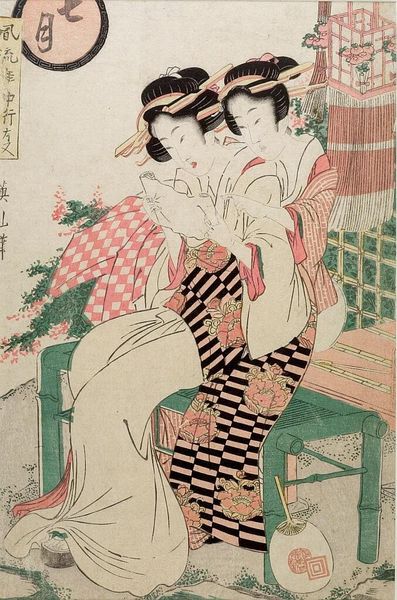
print, woodblock-print
#
portrait
# print
#
asian-art
#
ukiyo-e
#
historical fashion
#
woodblock-print
Copyright: Public domain
Curator: Before us, we have a work entitled "Enjoying the Cool Evening Breeze on and under the Bridge" by Kitagawa Utamaro. It is an example of Ukiyo-e woodblock print. Editor: My first impression is a feeling of serene observation. There’s a calmness emanating from these three women, heightened by the careful composition. Curator: It's important to understand the Ukiyo-e tradition, which translated means 'pictures of the floating world.' These prints captured fleeting moments of daily life and popular culture in Edo-period Japan. Often these were actresses, courtesans, and scenes of leisure. The form evolved and became important commercially. Editor: I see the parasol as more than mere weather protection; it is an iconic emblem here, perhaps representing status. Curator: Precisely! In Edo society, appearances were deeply entwined with one's social standing. The elegant kimono, elaborate hairstyles, and even the parasols communicate the wealth and status of the figures. Editor: Look how each woman embodies a slightly different mood – curiosity, introspection, flirtation even, despite being linked physically within the piece. Each holds a distinctive symbolism to their person and placement. Curator: Exactly. We also shouldn't ignore that the scene takes place on a bridge. The architectural framing is more than just a visual container: bridges are powerful symbols of connection. Are these women quite literally stuck in place on the bridge? Editor: It's that tension of belonging and yearning, isn't it? What are the symbolic choices reflected within these social roles and cultural pressures. The floating world also had boundaries and responsibilities for these ladies. Curator: Overall, this print invites contemplation about class and culture in 18th century Japan through an aesthetic moment of connection. Editor: Agreed. Its artistry lets us consider both individual expression, yet all these women had clear symbolic boundaries in place.
Comments
No comments
Be the first to comment and join the conversation on the ultimate creative platform.

